- Sunday, 21 December 2025
Meditation Enhances Peace And Harmony
The United Nations (UN) has finally recognised the importance of meditation for people and societies’ well-being. After the UN General Assembly (UNGA) passed a resolution on Dece
Upholding Journalistic Values
With rapid advancement in media technology, the media industry has gone through a sea change globally over the years. Because of sweeping changes in the media dynamics in no time, the digital media has e
Growing Media Coverage On Tourism
Nepal takes centre stage in mountain tourism as the nation is home to hundreds of mountains, including Sagarmatha and the other seven peaks above 8,000 metres. An estimated 45 per cent of tourists to Nepal make their trips
Manage Kathmandu’s Waste Sustainably
Kathmandu has been stinking once again as roads and alleys here have been filled with heaps of garbage for days. As waste is scattered everywhere, it is causing much inconvenience to the Capital Valley denizens. Dumping waste haphazardly on roads and streets in this hot rainy season may put people’s health at risk because it could lead to outbreaks of various contagious diseas
New COVID Variants Alarm Tourism
Tourism revival process in Nepal might be disrupted in the upcoming autumn with a gradual resurgence of COVID-19 infections in many parts of the nation. The reappearance of the pandemic is mainly attributed to the new sub-variants, including BA.5, of the Omicron variant. This sub-variant has been found to be more contagious than its previous lineages. Some cases driven by it have lately been detected in Nepal and many other countries around the world. The steady rise in the number of infections in the nation can be taken as a clear indication of the emergence of the fourth COVID wave.
Deck Cleared To Build Nijgadh Airport
The uncertainty over the fate of the proposed Nijgadh International Airport has now ended with the issuance of the full text of a landmark verdict on this national pride project by the Supreme Court (SC). The verdict delivered last month had ordered the government to stop the entire process concerning the construction of the much-hyped airport by citing serious environmental issues. Environmentalists had heartily welcomed the apex court’s decision, saying that it would help protect the rich biodiversity in the planned airport site and surrounding areas possess. Earlier in 2017, an environmental and social impact assessment suggested cutting about 2.4 million trees in three phases to build the airport. Many environmentalists had strongly opposed that idea.
Grassroots Democracy Becomes More Vibrant
There is no denying the fact that local governments are the fundamentals of democratic governance. As the lowest tier of administration, local governments work more closely with people than the federal and provincial ones. Because people’s elected representatives are directly involved in day-to-day administration and service delivery at the local level, they are supposed to work in a responsible, accountable and transparent manner. The Constitution of Nepal, 2015 has entrusted local government institutions with the key responsibility of addressing local problems and concerns. They are accountable to people for their decisions and activities. So, they are supposed to work as per the needs and aspirations of citizens. PowersLocal governments are powerful, functional and autonomous units under Nepal’s federal democratic republican set-up. They enjoy executive, legislative and semi-judicial powers. They also carry out their responsibilities and exercise powers as specified by the Local Government Operation Act, 2018. Because local polls play a very crucial role in developing local leadership and strengthening and institutionalising democracy at the grassroots, they are considered the cornerstone of democratic governance and political stability at the local level. Democracy cannot become vibrant and functional in a real sense without free and fair periodic elections and adult franchise. Most of the newly-elected people’s representatives have assumed their office in the local government institutions around the country by now. People have voted them in the power in the May 13 local election. The poll has been held in all the 753 local levels (six metropolises, 11 sub-metropolises, 276 municipalities and 460 rural municipalities). There are altogether 6,743 wards at all the local levels. People have elected a total of 35,221 representatives. It was the second local election in the country after the 2017 poll held as per the new constitution. After having been elected in the first local election, many people’s representatives tried their best to enhance the efficiency of the service delivery system in their respective constituencies. The performance of a few local levels was very commendable as they were able to bring about some noticeable changes in terms of citizens’ welfare and infrastructural development. They also prepared a roadmap for achieving the goal of economic prosperity and overall development. They seem to have prioritised health, education and other important sectors. Because people’s elected representatives are directly involved in day-to-day administration and service delivery at the local level, they are supposed to work in a responsible, accountable and transparent manner.What was another notable initiative was that local governments joined hands with the federal and provincial governments and other organisations to manage COVID-19. They took it as a challenge as well as an opportunity. One way or the other, they could prove their mettle while tackling the pandemic. In some areas, local governments also remained dedicated to cope with different natural disasters like flash floods, landslides and inundations. However, lots of local governments were blamed for not keeping their promises and failing to embrace democratic principles and values. They could not ensure good governance. Consequently, numerous anomalies came out, disrupting the functioning of local levels. A survey titled “Study on Corruption and Good Governance in Nepal-2075” that had been unveiled more than two years back portrayed an embarrassing scenario of abuse of powers and authority at local levels. Conducted by the Commission for Investigation of Abuse of Authority (CIAA), the survey indicated that a lot of local government institutions such as municipalities and rural municipalities were so corrupt that they occupied the second position after land revenue offices in terms of corruption. According to the report, the highest number of respondents (55 per cent) had termed land revenue offices as the most corrupt and 41.6 per cent had complained that they were forced to pay extra to get services from local government institutions. The anti-corruption body’s report also hinted that the number of complaints related to corruption and irregularities at the local levels was increasing at an alarming rate over the years. As many as 3,000 people in 15 different districts were surveyed by the CIAA. Similarly, annual reports from the Office of the Auditor General (OAG) have also pointed out an increasing rate of arrears at the local levels. With such unwanted activities, numerous local government institutions have lost their image as the ‘people’s governments’. As important state mechanisms aimed at strengthening the grassroots democracy, they should have worked towards promoting rule of law, transparency and answerability.Most local governments in the hilly and mountainous regions were charged with adopting a ‘dozer development’ approach. Using dozers, tracks were opened even in areas with fragile ecology randomly. Learning from the past, the new local leadership must work by putting people at the centre. They need to go for a planned development process and focus on creating jobs and tackling climate change issues. In addition, they must improve the service delivery system and stop raising tax rates haphazardly. As there has been an increased degree of political empowerment among Nepali people over the years, they have now been capable of judging political parties and candidates well. This is one of the reasons behind the humiliating defeat faced by many candidates in the fresh local election. At the 341 local levels, outgoing mayors/chairpersons had filed their candidacy again. But only 53 mayors and 89 chairpersons have been reelected. The local poll was not in favour of several province-level leaders who were affiliated with different political parties. They contested mayoral seats in various metropolises after resigning as members of provincial assemblies. This clearly shows a rising level of voters’ awareness and dissatisfaction over the political parties’ wrong working style. Youth ParticipationAlthough voters’ turnout was lower during this year’s local election as compared to the one held in 2017, youths’ participation in the electoral process as voters as well as candidates was quite encouraging. More than 40 per cent of the freshly elected representatives are below 40 years. If this is any indication, the country might see more youths contesting in the upcoming federal parliament and provincial assembly elections.The NC has won elections at 328 local levels while the CPN-UML and the CPN-Maoist Centre have been able to bag 205 and 121 local units, respectively. Five ruling parties—NC, Maoist Centre, CPN-Unified Socialist, Janata Samajwadi Party and Rastriya Janamorcha—had decided to forge an electoral alliance. However, they were successful in materialising the decision only at one-third of the total local levels.Many independent candidates have stolen the limelight in the local election. Balendra (Balen) Sah has become the Mayor of the Kathmandu Metropolitan City, defeating NC’s Srijana Singh and UML’s Keshav Sthapit. The victory of a rapper and structural engineer in the nation’s biggest metropolis has taken many by surprise.Independent mayoral contenders have emerged victorious in Dharan Sub-metropolis, Janakpur Sub-metropolis and Dhangadhi Sub-metropolis as well. The candidates who were in the election fray on the ticket of political parties have lost the poll to independent aspirants with a wide margin of votes. The growing nepotism and favouritism-related problem with the selection of candidates have been the main factor behind their crushing defeat. Anyway, this should be taken in a positive light in the sense that the political parties may start reviewing their approaches and working styles in the days to come. With more than 80 per cent of mayors/deputy mayors and chairmen/ deputy chairpersons at the local levels being new faces, they are expected to work by raising themselves above their partisan and personal interests.(Dahal is a deputy executive editor of this daily.)
Climbing The Virgin Peaks
The scenic Nar Phu Valley and its vicinity areas in Manang district have now come to the spotlight globally with a fresh historic ascent of Phu Khang Peak by Nepali and South Korean climbers. Five climbers associated with the Korean Kyungbock High School Alpine Club along with two Nepali mountain guides were able to make it to the summit of the 6,694-metre peak on May 4 this year. Although the peak was opened for climbing in 2014, it remained a virgin till that day.
Take Measures To Boost Tourism
Tourism is a vital force for creating jobs, spurring economic growth, preserving natural and cultural heritage and building peace in countries around the world. But this delicate sector has suffered an unprecedented setback following the outbreak of COVID-19 in late December 2019. Most nations had to impose travel bans and other restrictions to contain the pandemic. It needs no reiteration that millions of jobs and sources of livelihoods were lost worldwide together with the outbreak of this contagion. The aviation sector alone incurred a loss of billions of dollars globally with most passenger flights coming to a grinding halt due to travel restrictions. Even many reputed airlines went bankrupt globally. The resurgence of newer variants of the pandemic led nations to partial or full lockdowns one after another. That caused further damage to the vulnerable tourism industry. Recovery trendHowever, global tourism seems to be rebounding steadily following the vaccination campaign against the pandemic. International tourism continued its recovery in January 2022, with a much better performance compared to the weak start to 2021, according to the World Tourism Organisation (UNWTO). Global tourist arrivals more than doubled in January 2022 as compared to 2021. About 18 million more visitors were recorded worldwide in the first month this year. This equals the total increase for the whole of 2021. Global tourism needs to continue recovering to reach the pre-pandemic levels in tourist arrivals. However, given the successful inoculation against COVID-19 and drastic fall in infections and fatalities worldwide, international tourism is expected to continue its gradual recovery in 2022. Many destinations from around the world have already lifted COVID-related restrictions while others have eased such curbs. But the ongoing Russia-Ukraine war has become an obstacle to the global tourism recovery because it has added pressure to existing economic uncertainties at a time when several COVID-related travel restrictions are still in place. Since the war does not appear to be coming to an end anytime soon, it could affect overall confidence and impede the process of tourism revival. The pandemic dealt a fatal blow to Nepal’s tourism as well. Hotels, restaurants, airlines and other sectors associated with the tourism industry had to go through the worst period in history. Hundreds of thousands of people involved in tourism business became jobless and tourism receipts shrank considerably drastic a drastic drop in international tourist arrivals. In 2019, Nepal hosted about 1.19 million international tourists. Such a remarkable rise in tourist arrivals had created a lot of rays of hope among the travel trade people and government authorities. Nepal was to organise Visit Nepal Year 2020 with a target of bringing in two million foreign tourists by that year. But no sooner had that key national tourism campaign kicked off than the global public health emergency broke out, causing the most unfavourable situation. In 2020, the nation saw only 230,085 foreign tourists. In 2021, the figure dropped further to 150,962. However, the country’s tourism has begun bouncing back gradually since the beginning of 2022. About 16,975 foreign tourists entered the nation in January while the number increased to 19,766 and 43,600 in February and March, respectively. In April, the country welcomed more than 58,300 foreign tourists. These figures speak volumes that the country’s tourism has now been on a strong recovery track.Nepal has welcomed a lot of mountaineers this spring. More than 700 climbers from as many as 70 nations from across the world have received permits to attempt various mountains, including Sagarmatha. The government receives a lot of revenue in royalties from these expeditions. Besides, mountain guides and other support staff have got a seasonal employment. As expedition members stay within the country for longer period as compared to other visitors, their spending is much higher than others. They are the ones to directly support the rural economy. In Nepal, tourism is regarded as the second largest source of foreign exchange earnings after the remittance sector. In view of tourism’s contribution to job creation and maintaining foreign currency reserves, the government has given top priority to this sector. In an effort to revive the tourism industry, the government had constituted a National Tourism Recovery Directive Committee some four months back under the leadership of Minister for Culture, Tourism and Civil Aviation Prem Bahadur Ale. A technical panel under that committee had also been formed. Having assessed the overall scenario, the technical committee has lately submitted its report to the concerned ministry. The report suggests taking necessary measures to revive the ailing tourism business. The technical panel advises the government to work towards attracting a total of 500,000 foreign tourists into the country this year and one million in 2023. It has also proposed for rebranding Nepal as an appealing tourist destination. It has recommended for conducting skill development training and exploring new tourist spots in all the seven provinces to diversify tourism. Need of promotionSince tourism investments worth billions of rupees have gone down the drain in the country since the appearance of COVID-19, it is necessary for the government to come up with a prompt initiative to build confidence among the investors. Nepal has now become a safer destination for tourists with more than 70 of eligible population receiving a jab. As suggested by the technical committee, it is time for the country to focus on international publicity and promotion to give a boost to the tumultuous tourism industry.(Dahal is a deputy executive editor in this daily.)
Preserving Gorkhapatra As A National Heritage
Today (Baisakh 24) is a very important day in the history of journalism in Nepal. In 1958 BS (1901 AD), Gorkhapatra, the sister publication of The Rising Nepal, came into existence. Initially, it was a weekly newspaper. The publication became bi-weekly from Asoj 29, 2000 BS while it started being published three times a week from Poush 8, 2003 BS. It turned into a daily from Falgun 7, 2017 BS. The newspaper has been serving the nation constantly over the past 121 years.




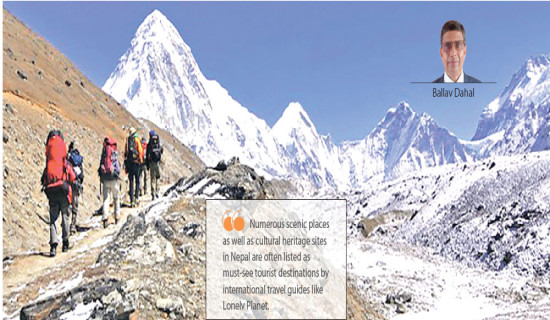
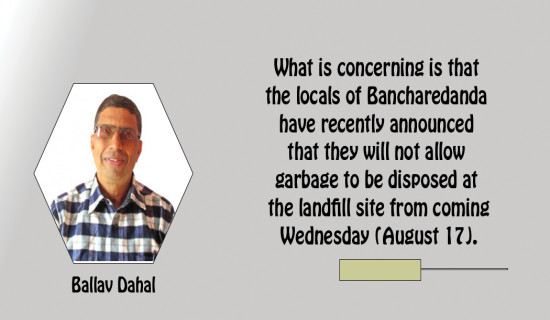
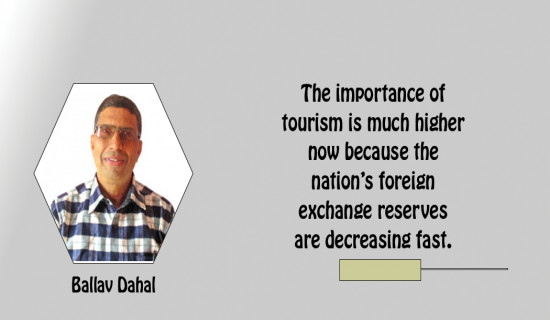
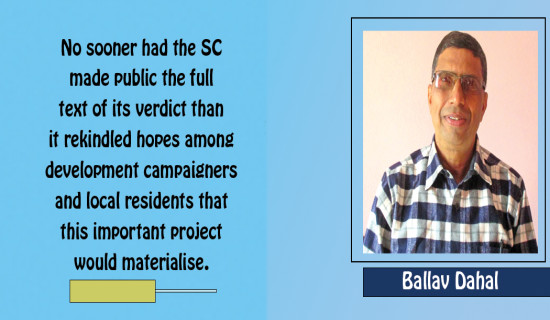
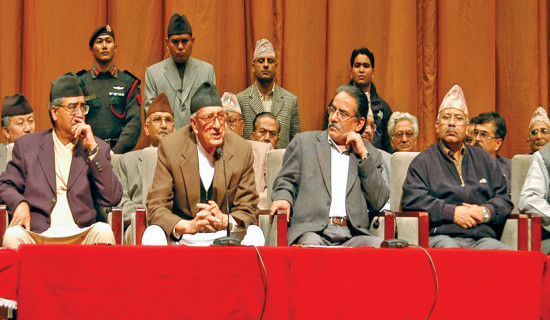


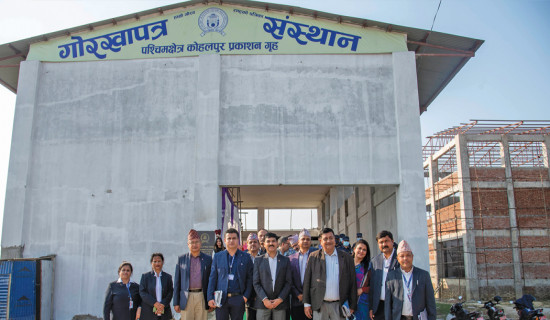
.jpg)